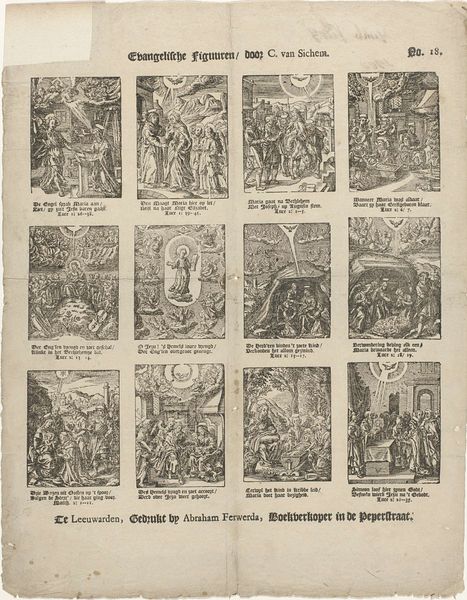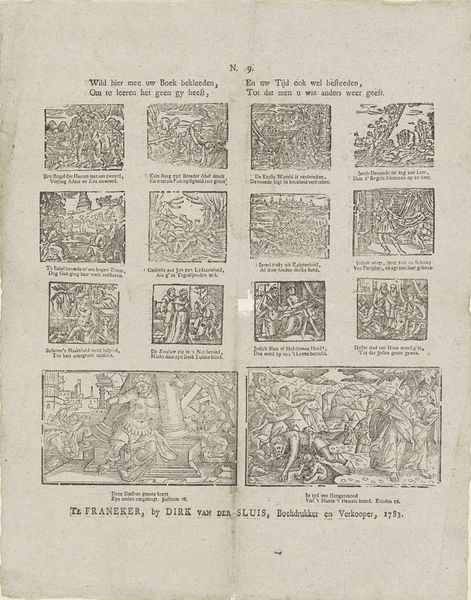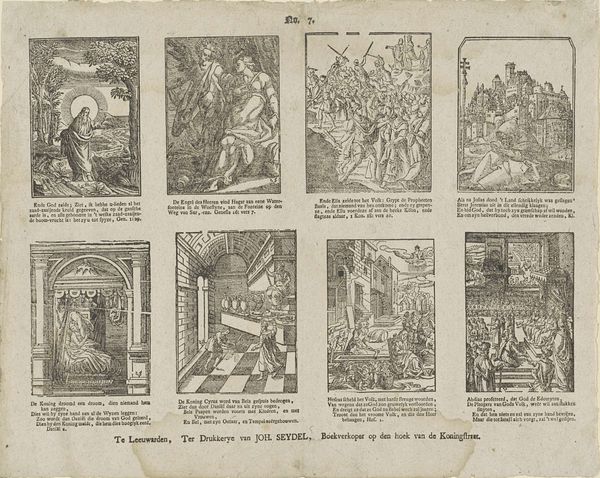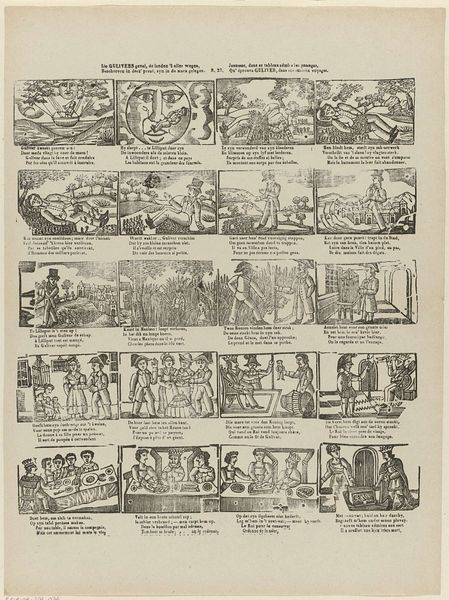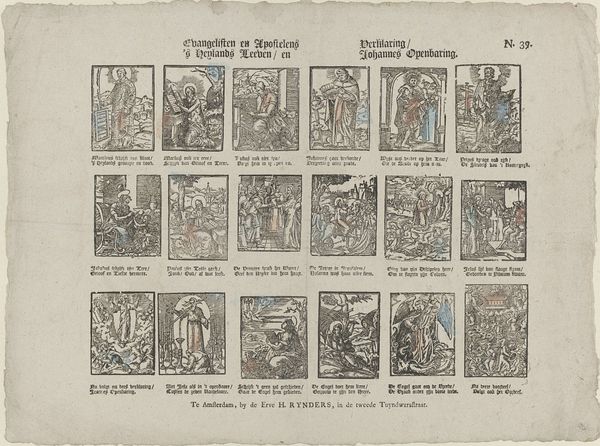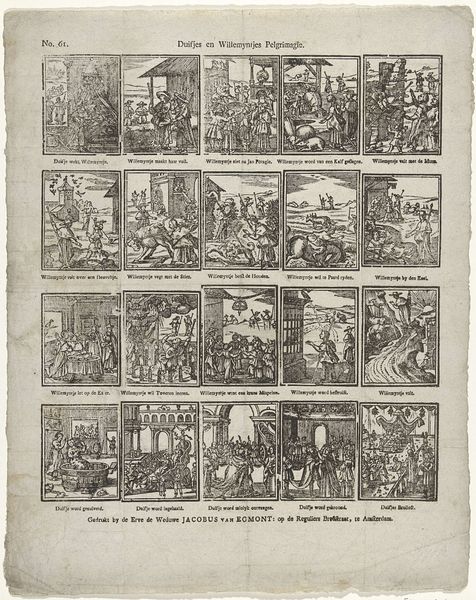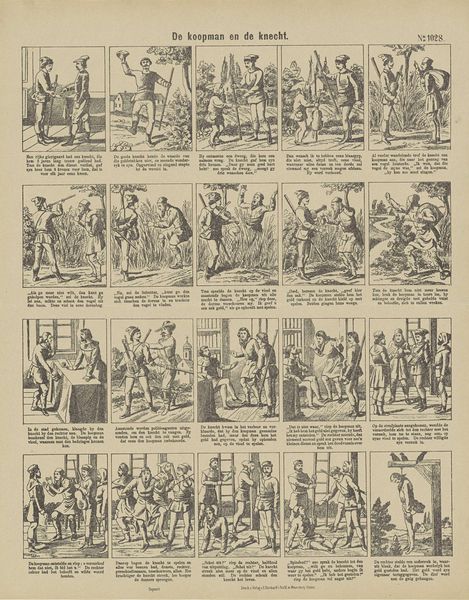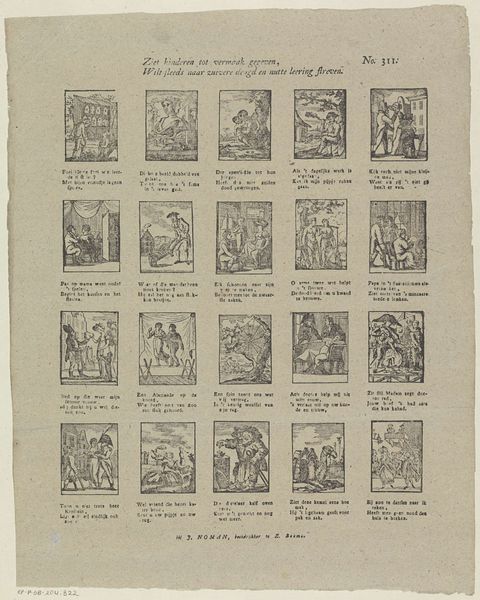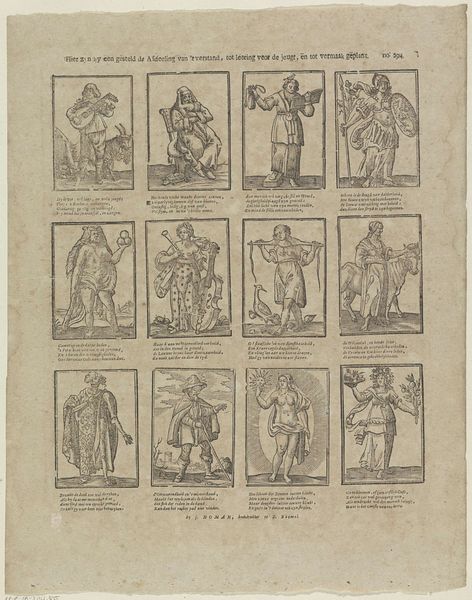
print, engraving
# print
#
figuration
#
history-painting
#
engraving
Dimensions: height 330 mm, width 409 mm
Copyright: Rijks Museum: Open Domain
Editor: This print, “Taferelen uit het Oude Testament,” by Christoffel van Sichem IV, probably created sometime between 1776 and 1813, shows eight little scenes from the Old Testament in an engraving. They look kind of like little theatre stages. What cultural echoes do you hear in this work? Curator: It's fascinating to consider the cultural memory embedded within these engravings. These scenes, chosen and presented together, act as visual shorthand. Each frame becomes a symbol loaded with the weight of religious doctrine, moral instruction, and shared cultural identity. Consider how each scene triggers specific emotions and understandings rooted in that cultural context. Do you notice recurring visual motifs? Editor: Well, there are figures kneeling, pointing, or raising their hands. Does that imply a cultural code of proper behavior, of showing reverence or asking for guidance? Curator: Precisely. Gesture becomes a powerful tool. The act of kneeling, for example, isn't just physical; it’s a symbolic act of submission, acknowledging a higher power. Each gesture helps establish a cultural dialogue about faith and authority. Editor: So it’s a method of preserving and passing on a particular way of understanding the world? Almost like a family photo album of cultural ideals? Curator: Exactly! It’s a selective memory bank. Van Sichem is curating specific moments. Note, however, that we might interpret them differently now. How do we disentangle the intended meaning from our own contemporary cultural understanding? Editor: That makes sense. Thinking about how symbols shift their meanings over time makes me realize how layered art like this can be. Curator: It truly highlights the ongoing cultural conversation happening whenever we engage with art. There's a dialogue happening between past and present.
Comments
No comments
Be the first to comment and join the conversation on the ultimate creative platform.
